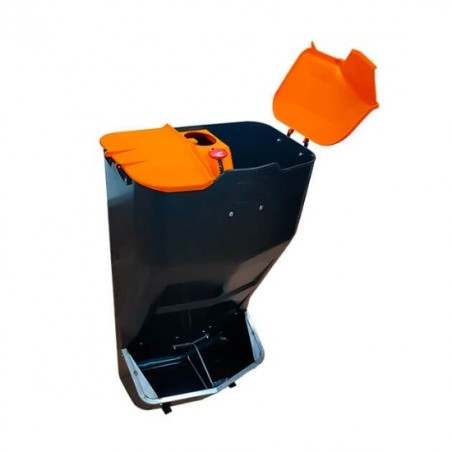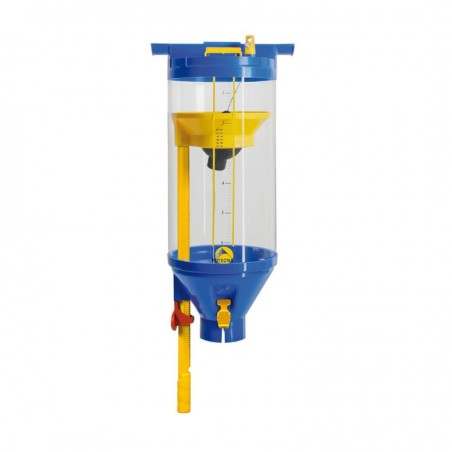The aim of this study was to identify herd factors associated with a high prevalence of gastric ulcers in finishing pigs. Based on results from earlier studies, it was decided to focus on feed type, infectious diseases, the use of straw and the floor type in the pens.
The managers of 37 Danish finishing farms answered a questionnaire about housing, feed, health and management on their farms. The farms were originally selected for a study on mortality, and they all had either a very low (21 farms) or a very high mortality (16 farms). The stomachs of 20 pigs per farm were examined macroscopically at slaughter, and pathological changes in the oesophageal part of the stomach were scored on a scale from 0 to 10 (score 0: no changes, score 1-5: parakeratosis/erosion, score 6-10: ulcer/fibrosis). The association between the risk of having a stomach score of 6-10 and potential risk factors at the herd level was analysed. The explanatory factors were: feed type (pelleted/meal), herd health status with regard to infection with Actinobacillus pleuropneumoniae serotypes 2 and 6 (App 2, App 6) (yes/no), PCV2-vaccinated pigs (yes/no), access to straw in a straw rack or on the floor (yes/no) and type of pen floor (percentage of slatted floor, analysed as a continuous variable). In addition, mortality level (low/high) was included as an explanatory factor in the final statistical model.

The prevalence of stomachs with a score of 6-10 was 51% in herds with low mortality and 62% in herds with high mortality, but the difference was not statistically significant. The use of pelleted feed (OR=3.7), PCV2-vaccinated pigs (OR=1.9) and the herd infection with App 6 (OR=1.6) were associated with an increased risk of a stomach score of 6-10 (p<0.05). No effects of App 2 infection, straw or floor type were found.
The study confirmed the negative effect of pelleted feed. PCV2-vaccinated pigs had an increased risk of having stomach ulcers, probably because it is more common to PCV2-vaccinate in herds with stomach ulcer problems. The association between App 6 infection and stomach ulcers supports the results of an earlier Danish study, in which an association between pleurisy and stomach ulcers was found. This study included only a limited number of herds, and only substantial differences would be detected.
M. E. Busch, E. Okholm Nielsen. Herd level risk factors for stomach ulcers in finishing pigs. 24th International Pig Veterinary Society Congress.






